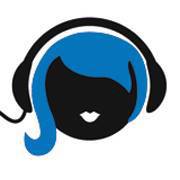I recently did a week of Television shows with an artist promoting their new record. I haven’t worked with this artist in several years and was unfamiliar with the songs to be performed. So to prepare for this, the first thing I do is request audio files of the songs. Then I start listening. If there are any tracks involved, I ask for a breakdown of the stems so I can hear what is coming from each track.
In this case, there are live acoustic drums, drum pads, and some drums on track. There are also live keys and some keys on track. There won’t be a rehearsal prior to our first show, so knowing what signals are coming down what channel is a must. Many times artists will have specific edits for TV performances. There are time constraints, and arrangements may also change from how the songs are usually performed. It’s good to know this because cues and solos may show up in different places from where they usually do.
When doing TV with an artist, my job is to oversee the mix. I’ll go over things with both the FOH, who mixes for the studio audience, and the Music Mixer who mixes for the broadcast. I’ll spend most of my time in the broadcast booth or remote truck since that is the mix being heard by millions as opposed to the hundred or so in the studio audience. Depending on the show, the band may soundcheck the song once or twice and run through it one or two more times for camera blocking, but it’s usually no more than 2-3 times unless there is a problem.
For the broadcast engineer who is hearing the song live for the first time, it can be tricky to pull a good mix together in only 2 or 3 passes. If there are any specific things like effects cues, solos, or other not so obvious but important bits, I’ll handle fader moves for those. Otherwise, I let the broadcast engineer do their thing while I guide the mix to what the artist wants.
Most of the studios have a pro tools rig or similar that they use in a virtual soundcheck fashion. The engineer will record the soundcheck in order to play it back later when he/she has time to really dial in the mix. Then as long as nothing changes dramatically with the band’s live broadcast performance, all the broadcast engineer should have to do is fader moves and very minor tweaks.
On a side note to the musicians
This is why you don’t want to throw a curveball by deciding to change something after you have sound-checked. For instance, the guitar player played his Gibson for soundcheck but then decides he wants to play his Strat for the performance. Or worse yet- the band wants to throw a major curveball and do a completely different song! I had this almost happen once. The band I was mixing was performing at the Grammy’s. The record company was insisting they perform the single, which was already a year old. The band rehearsed, did soundcheck and camera blocking, and it was all sounding great in the remote truck. When I arrived in the dressing room afterward, the band was discussing plans to play a completely different song for the live performance because they were mad at the record company. I thought at first they were joking but quickly realized they were serious. I explained to them that it would not go well for audio. In fact, it would be a complete disaster. Things like guitar tones, guitar and keyboard levels, keyboard patches, all would need to be adjusted dramatically. It might work if you were a punk rock band but they weren’t, and it would have sounded terrible. We discussed it for some time, and they agreed to stick with the original plan.
There is just so much going on in the remote truck during award shows and live TV broadcasts. The broadcast music mixer has their hands full as well as their heads. If you throw them a curve ball like a different instrument or a new song, there isn’t really going to be a time in your 3 minute 20-second slot to recover and make it sound as good as it would have had you done what you rehearsed. These guys have so much more going on than just mixing your band’s song, so you want to give them consistency, which gives you the best chance of sounding great.
______________________________________________
After the soundcheck/camera blocking, it’s a lot of sitting around and waiting. Depending on where in the show the band is performing, it could be hours of standing by. This is a good time to pull out the iPad, laptop, catch up on emails, work, etc. When it’s time for the performance, I will be in the broadcast booth or remote truck again. Some TV is a true live broadcast and some is taped for broadcast later in the day. Once it’s over, we pack up and load out. For me, that means simply walking away. As you can tell it’s a terribly hard day for me 😉
My experiences over the years of doing TV shows range from: being told I can stand in the control room if I stay out of the way, to having an artist with so many cues going on that I was given half of the console to operate.
I once did a TV show in France where they told me ‘here sit down and do it. WHAT? Uh-hum, ok I’ve never actually mixed for TV before but heck yeah, I’ll give it a go. Needless to say, I was sweating bullets as we drove away on the tour bus and the entire band was sitting in the front lounge watching a tape of the performance and listening to my debut TV mix. Phew, they were happy and I still had a job YAY!
